Contents
Recently, many gardeners tend to use greenhouses for growing tomatoes. Lush green tomato bushes protected by polycarbonate attract bright, fleshy and juicy fruits that ripen several weeks faster than ground ones. And although the plants are protected from weather surprises, numerous tomato diseases in a polycarbonate greenhouse become a real scourge of vegetable growers.
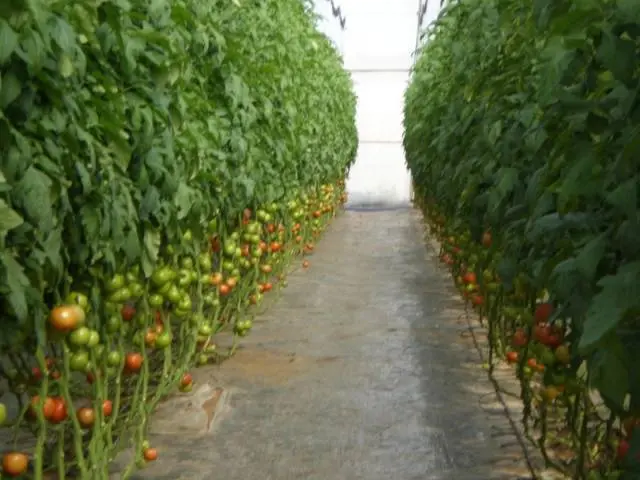
Over the years, there are more and more diseases in tomatoes, and in a greenhouse, the infection quickly spreads among seedlings. Among the causes of diseases, there are several:
- violation of agrotechnical conditions of cultivation;
- significant susceptibility of selected tomato varieties to the influence of pathogens;
- high humidity inside the greenhouse;
- contamination of greenhouse soil with pathogens;
- selection of unhealthy seeds.
Before growing tomato seedlings, disinfection should be carried out in the greenhouse, and the seeds should be processed. It is necessary to periodically ventilate the room and inspect the bushes. If at least one diseased plant appears, it should immediately be removed and the causes and type of disease should be found out. Diseases of tomatoes in the greenhouse can be divided into three large groups.
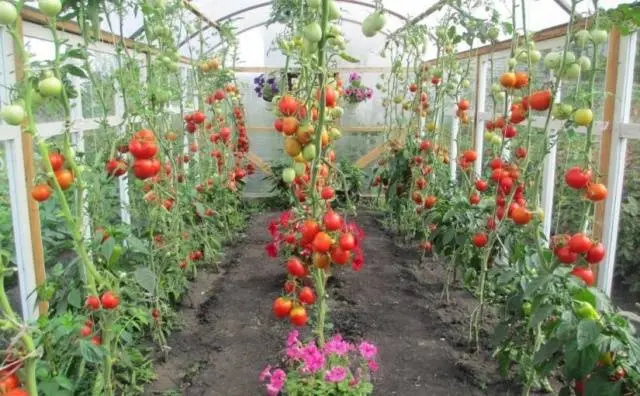
Fungal diseases
If a fungus has appeared in the greenhouse, it can spread very quickly and destroy the crop. Its appearance is usually promoted by high humidity. A significant number of tomato diseases in the greenhouse that require urgent treatment are provoked by the fungus.
Antraknoz
Its causative agent is more often carried with weeds. The fungus is considered a weak pathogen and can exist dormant in the ground for a long time, but with a sharp increase in humidity and temperature, it wakes up. The first signs of tomato disease appear on ripe fruits in the form of small depressed spots, then turning into dark rings. Inside, the tomatoes begin to rot. Green fruits, stems, leaves, as well as the soil around the bushes are also affected. To prevent fungal disease of tomatoes, the following measures should be taken:
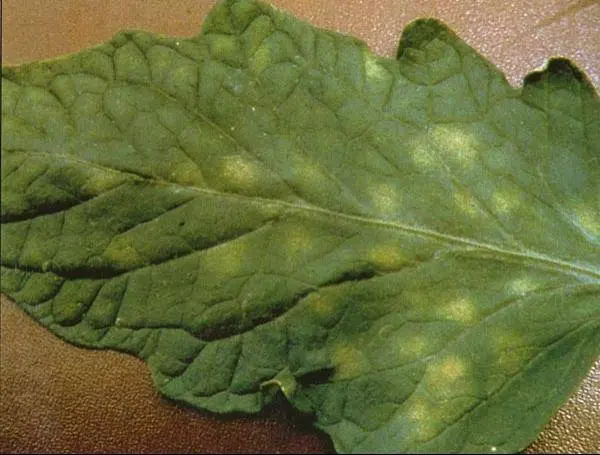
- when buying seeds, choose a certified product;
- control the level of humidity and temperature in the greenhouse;
- remove growing weeds in time;
- tie the bushes to the pegs, preventing the fruits from coming into contact with the ground;
- periodically alternate sowing tomatoes in a greenhouse with other crops;
- spray seedlings with fungicidal solutions.
Fitoftoroz
This is the most dangerous of the fungal diseases of tomatoes in the greenhouse; its signs are clearly visible in the picture:
- brown foliage;
- the appearance of a powdery coating on the lower plate of seedling leaves;
- dark spots on fruits.
Gradually, the tomatoes begin to rot, and the entire crop disappears.
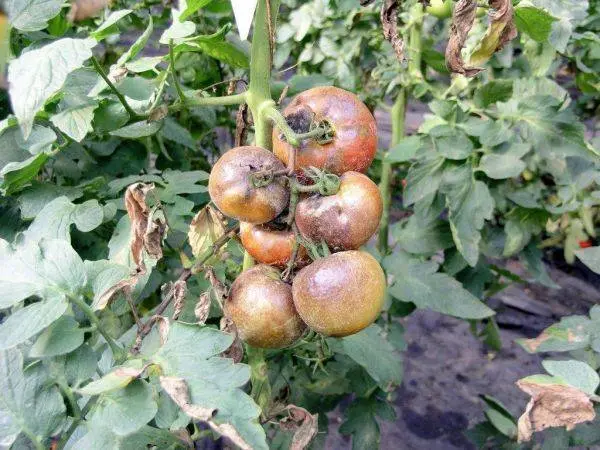
Many home remedies are effective in preventing and treating tomato disease. The fungus is afraid of garlic. Garlic spraying in the greenhouse should be started from the moment the ovaries form on the tomato bushes and carried out every two weeks. In the infusion of garlic, you can add a little potassium permanganate. A good preventive measure against tomato diseases in a greenhouse is spraying with a solution of edible salt. Before the procedure, you need to inspect the bushes and remove already damaged leaves. A 2-3% saline solution forms a thin film on the foliage, which protects it from the penetration of fungi.

Having planted seedlings of tomatoes in the ground, after about a dozen days, you can start weekly kefir spraying. They will be a good prevention against diseases. Iodine added to water with milk will protect plants from fungi and speed up the ripening of tomatoes.
Ash treatments have proven themselves well, which are carried out after planting tomato seedlings, during budding and when ovaries appear. Spraying seedlings with infusion of dried and crushed tinder fungus are effectively protected from tomato disease. They should be started during the formation of ovaries and carried out with a frequency of once every 10 days. If signs of late blight appear, you need to treat the tomato bushes additionally.
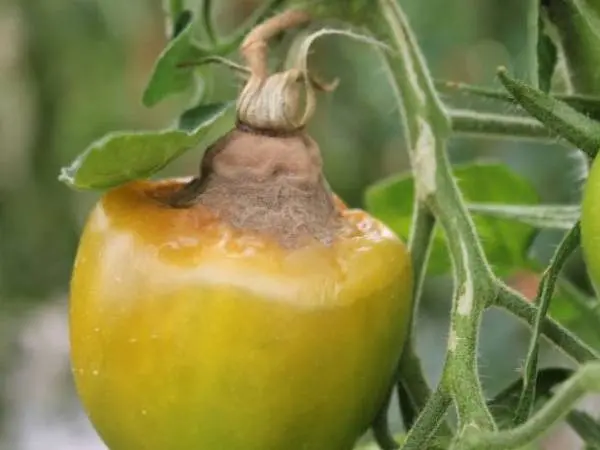
An original method for increasing the disease resistance of tomatoes in a greenhouse was proposed by scientists from Germany. In a simpler version, the method consists in piercing the fortified tomato stalks with pieces of copper wire up to 4 cm long. The puncture is made about 10 cm above the ground, the ends of the wire are bent down. Copper in microdoses enhances the respiratory and oxidative processes in plants, improving the production of chlorophyll in tomato seedlings.
Fuzarioz
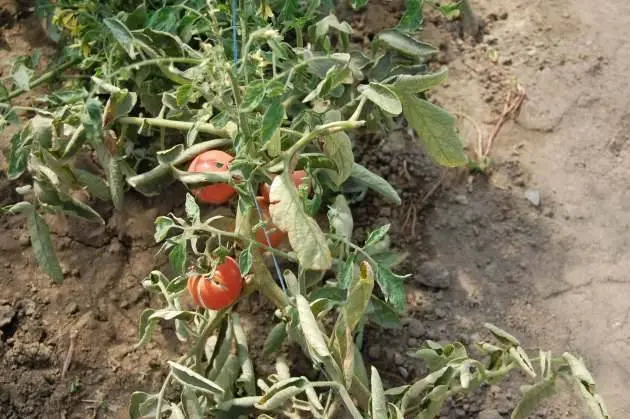
The fungus that causes tomato disease is activated at high humidity and temperature. Symptoms appear as:
- yellowed and falling lower leaves;
- deformed petioles;
- pinkish-yellow coating on the root neck of plants.
Gradually, the fungus grows inside the stem, the plant weakens and dies.
Prevention of this tomato disease includes the following actions:
- the fungus accumulates in the soil, so you need to change the soil in the greenhouse or disinfect it;
- after harvesting, destroy all tops of tomatoes;
- the cause of tomato disease can be an excess of nitrogen – you should not get carried away with manure top dressing of plants;
- it is necessary to ensure that there is a layer of earth 10-15 cm thick above the root collar, so the tomatoes need to be hilled;
Root rot
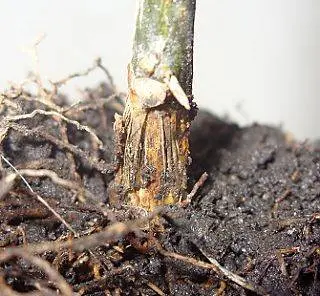
This dangerous disease of tomatoes often appears with high soil moisture in the greenhouse. Although it mainly affects the roots of tomatoes, its signs are also visible on the ground part of the plants:
- the stem in the lower part becomes thinner, withers and dies;
- the leaves first wither during the day, and at night they are restored, with the development of the disease they already dry out;
- the stem seems to be loosened, and the basal neck of the tomatoes turns black.
To treat tomato disease, the following measures are necessary:
- damaged tomato bushes must be destroyed immediately;
- dry the soil with sand and provide ventilation in the greenhouse;
- sprinkle the root part of the plants with calcined sand or ash;
- to stimulate the growth of additional roots, add a layer of steamed peat on top;
- carry out the treatment with a fungicide, and pour the roots of the tomatoes with a growth stimulator.
If the tomato disease has affected too many plants, it is better to completely change the soil in the greenhouse and make a new planting of tomato seedlings.
Alternaria
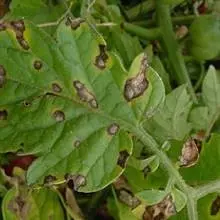
When this tomato disease occurs in a greenhouse, dry brown spots appear on all parts of the plant, including the fruits. Growing, they lead to wilting and death of tomatoes.
Signs of alternariosis can be distinguished from late blight:
- with the first disease, the spots remain dry at any time, and their outlines are rounded, with clear boundaries;
- with the course of the disease, the leaves turn yellow, which does not happen with late blight – it gives large blurry spots.
When signs of disease appear on plants, treatment with fungicides should be started.
Cladosporiosis

This fungal disease of tomatoes has another name – brown spot. It is especially common in greenhouses and affects tomatoes during the flowering period. Brown spots appear first on the lower leaves of tomatoes, and then pass to the fruits. If there are already lesions, it is necessary to carry out fungicide treatments, and after harvesting the tomatoes, treat the greenhouse with a solution of copper sulfate.
Gradual wilting of seedlings
In greenhouses, the phenomenon of slow wilting of tomatoes is often observed. It can be caused by several reasons.
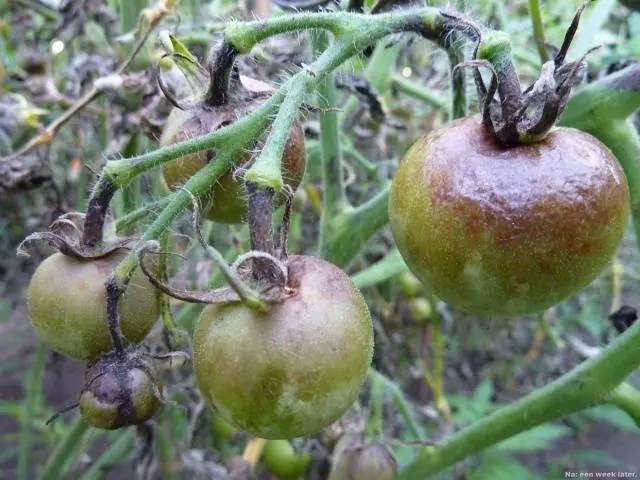
- Sclerotinia first appears as whitish spots on the leaves. Then the whole plant becomes discolored and dies. When the first signs of tomato disease appear, you need to replace the soil in the greenhouse or disinfect it.
- Didymella fungus causes symptoms such as black dots on tomato stalks. Bordeaux liquid will help to cope with it.
- One of the most dangerous and common tomato diseases in greenhouses is gray rot.. She very quickly captures the space of the greenhouse and destroys all tomato seedlings. Gray rot is carried with the soil, so it is necessary to disinfect it and normalize the temperature and humidity in the greenhouse.
Mučnistaâ rosa
This is a common tomato disease in a greenhouse, the photo shows the affected plants.
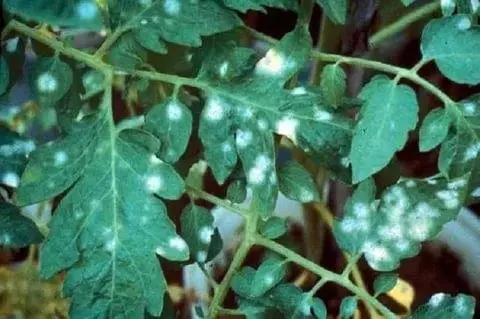
It occurs when dripping moisture forms in the greenhouse. Its first signs appear in the form of a white coating on the leaves, resembling scattered flour. With the development of tomato disease, the leaves curl and fall off, the plant dies. Powdery mildew is difficult to control. Spraying solutions can be used as a means of control:
- colloidal sulfur;
- copper sulphate;
- mullein with the addition of urea;
- soda ash with urea;
- whey;
- dry mustard;
- infusion of garlic.
Viral diseases
This type of tomato disease is dangerous because effective methods of control have not yet been found against them. Therefore, they are easier to prevent by treating the seeds before planting and the soil with a solution of potassium permanganate.

Aspermia
For the first time, tomato disease was discovered in the 40s of the last century. Its main features:
- excessive bushiness of the tops of plants;
- inhibition of growth of the main and side shoots;
- wrinkled twisted leaves;
- fruit deformity.
Tomato necrosis
The causes of this tomato disease are associated with factors such as:
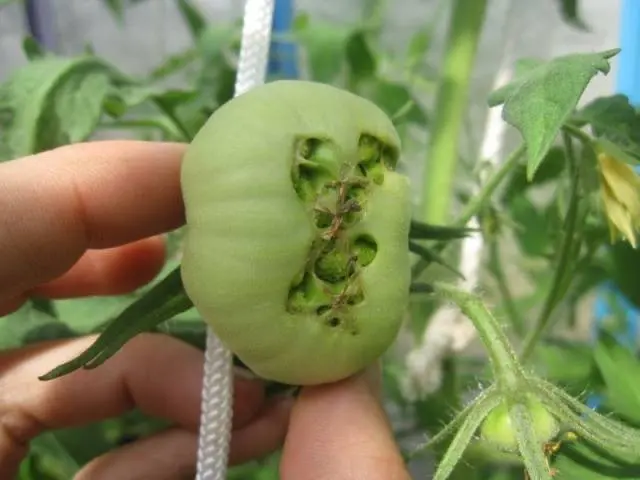
- insufficient illumination of plants;
- poor ventilation in the greenhouse;
- excessive watering;
- saturation of the soil with nitrogen fertilizer.
Mosaic
Tomato disease manifests itself in the form of light green spots on the leaves. The rate of plant development decreases, and the virus remains on the seeds.
Bacterial
The most dangerous bacterial diseases of tomatoes in the greenhouse – photo. Their treatment is very difficult – it is almost impossible to save the crop, so it is better to perform preventive work before planting tomatoes:
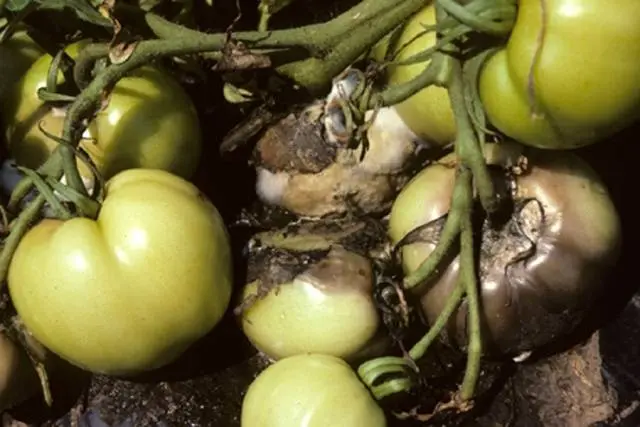
- disinfect seeds;
- annually change the topsoil and disinfect the soil in the greenhouse;
- diseased plants should be removed and burned as soon as possible;
- disinfect used tools.
Black spot
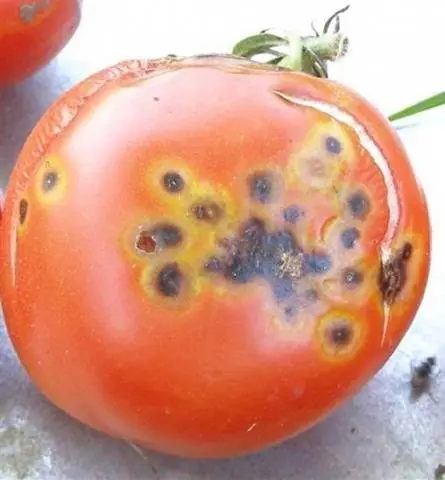
Symptoms of tomato disease appear first on the leaves in the form of small brown spots, which gradually increase and cover all parts of the plant, including the fruits. Gradually it dies. To combat the disease, careful spraying of tomato seedlings with bactericidal solutions, Bordeaux liquid is necessary. But the most important:
- timely detect and remove the affected parts of plants;
- make sure that the tomato seedlings are not too thick;
- annually change or disinfect the soil in the greenhouse;
- after fruit set, you can remove the lower leaves on the tomato bushes.
Cancer of tomatoes
This dangerous disease of tomatoes begins with wilting and twisting of the lower leaves on the seedlings. On sections of the stems, you can see darkening and a yellow empty core. Spots also appear on the fruits, due to which the tomatoes lose their presentation. The development of cancer is promoted by high humidity in the greenhouse and temperature. In the fight against tomato disease, copper-containing fungicides provide effective help, but timely prevention is better.
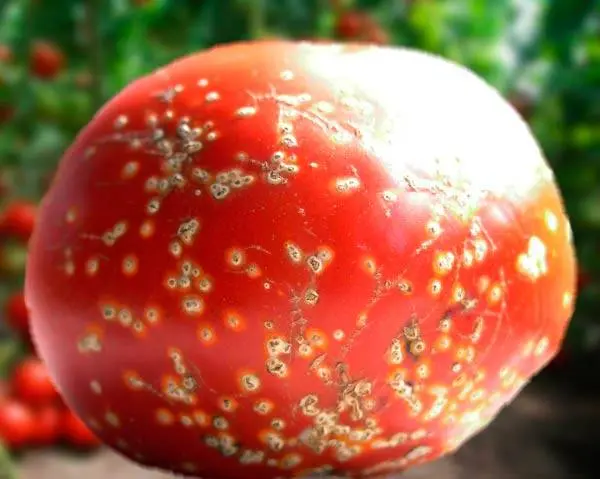
vermin
Tomatoes in greenhouses have a variety of pests that can cause disease symptoms. Therefore, you should regularly carefully inspect the bushes in the greenhouse and the soil around them.
spider mite
The pest is very small in size, it braids tomato bushes with a thin cobweb and sucks out plant juice. As a result, the leaves of tomatoes dry and fall off. Ticks usually exist in colonies and hide on the underside of foliage, under clods of earth and leaf litter.
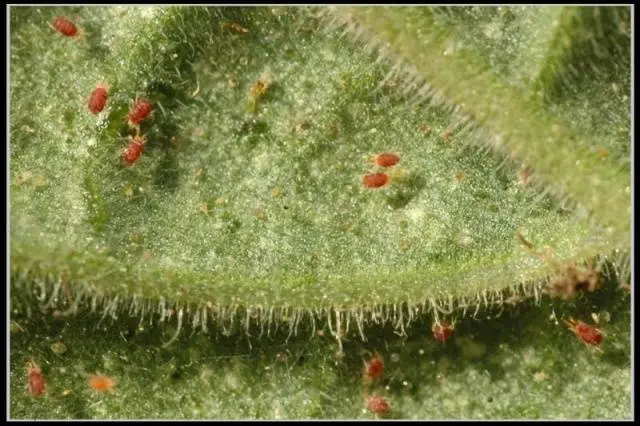
To combat the pest of tomatoes will help the following measures:
- since they die at high humidity, you can water the plant abundantly and close it with a plastic bag;
- up to half of the insects are destroyed by rubbing the leaves with soap and water;
- spraying tomato seedlings with garlic or onion infusions is good, while it is imperative to moisten the underside of the leaves;
- dandelion infusion is also effective;
- careful spraying of tomatoes with phosphorus and sulfur preparations will also be beneficial;
- ticks are afraid of ultraviolet radiation, which can be used in the fight against them – you need to irradiate all the secluded corners where they hide.
whitefly
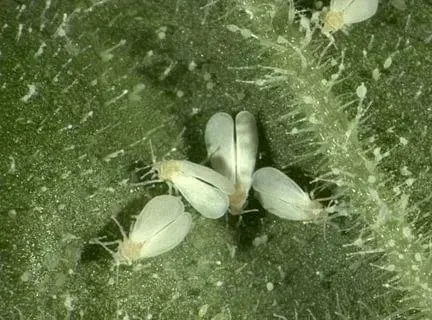
These pests of tomatoes in the greenhouse are small insects whose larvae stick to the leaves and feed on the juice. They can be found by some signs:
- the appearance of a flying midge resembling a moth over seedlings;
- the appearance of a white cloud if you shake a tomato bush;
- the presence of black plaque, which gives a concomitant fungus;
- shiny sticky coating on tomato leaves.
Means of dealing with whiteflies:
- glue traps – their disadvantage is that beneficial insects are also destroyed;
- wipe the leaves of tomatoes from the underside with cold water and soap;
- significantly reduce the temperature in the greenhouse – up to about 10 degrees;
- spray tomato seedlings with infusions of garlic or yarrow.
Gnawing shovel
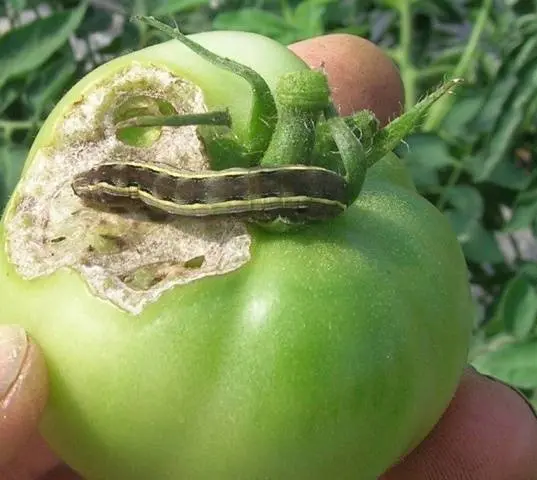
This tomato pest, which is a caterpillar up to four centimeters in size, is invisible, as it hides in the soil during the day and feeds on the plant at night. After wintering, adult caterpillars gnaw on the stems of tomatoes, and the larvae feed on the pulp of the fruit, penetrating inside. At night, the caterpillars get to the fruits and leaves of tomatoes, gnawing them. During the night, one individual can ruin 10 bushes.
To fight, you can use various folk remedies:
- butterflies will be scared away by spraying seedlings with a decoction of tomato tops or infusion of wormwood, tobacco;
- you can catch them on sweet baits in the form of fermented juices, jams;
- it is necessary in the greenhouse to periodically loosen the soil between the rows;
- more often remove weeds from the beds, especially in August, during the laying of eggs.
Wireworm
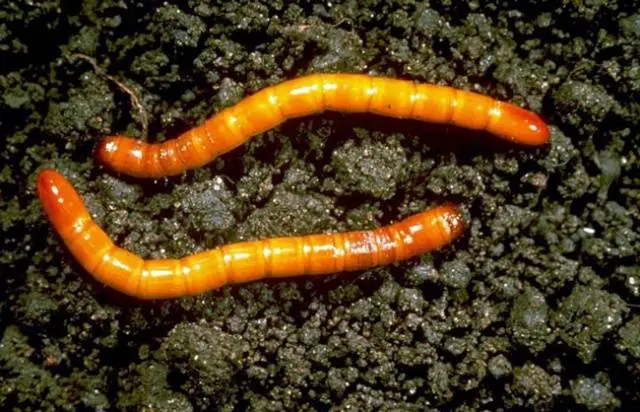
Damage to the roots and stems of tomatoes is caused by the larvae of click beetles – yellow caterpillars. The fight against wireworm must be carried out comprehensively:
- during the planting of seedlings of tomatoes, it is necessary to put a handful of onion peel in each hole – this measure will scare away the pest;
- dry mustard will successfully replace onion peel;
- green manure will also help, especially the wireworm is afraid of peas and beans;
- using crushed eggshells or ash, you can reduce the acidity of the soil in the greenhouse – this is an effective measure against any tomato pests;
- you can use traps in the form of a fishing line with pieces of potatoes strung on it – it fits into the ground at a depth of 10 cm, and after a while it is destroyed along with the caterpillars.
Gall nematode

Greenhouse tomato pests are small worms that feed on tomato roots, weakening them. They also release toxins that form growths on tomato roots. The plant loses the ability to fully receive nutrients and dies. An excellent prophylactic against tomato pests is the use of trapping plants. The soil is sown with green manure plants – peas, soybeans, vetch or other crops. Their roots secrete substances that attract larvae. The pest is introduced into the root system of green manure, after which the plants are mowed and embedded in the soil. The pest dies before it has time to complete its development cycle.
Medvedka
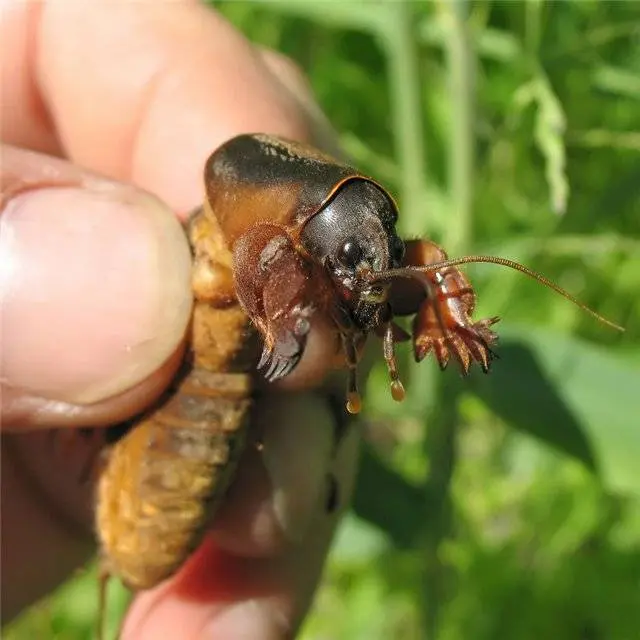
This dangerous pest even reaches greenhouse tomatoes. It lays eggs in the ground, from which larvae emerge after three weeks. They gnaw at the roots of plants. You can fight with a bear with folk remedies:
- sow aisles of tomatoes with marigolds or calendula;
- water the soil around the tomatoes with solutions of onion peel or chicken manure;
- fill the aisles with sand moistened with kerosene;
- traps placed in the ground are effective;
- crushed eggshells mixed with unrefined vegetable oil will be a destructive bait for a pest and at the same time an excellent fertilizer for tomatoes.
Conclusion
In order not to lose the harvest of delicious tomatoes grown with such labor and love, you need to choose healthy seeds, strictly adhere to the rules of agricultural technology and carry out preventive treatments in the greenhouse in time.









